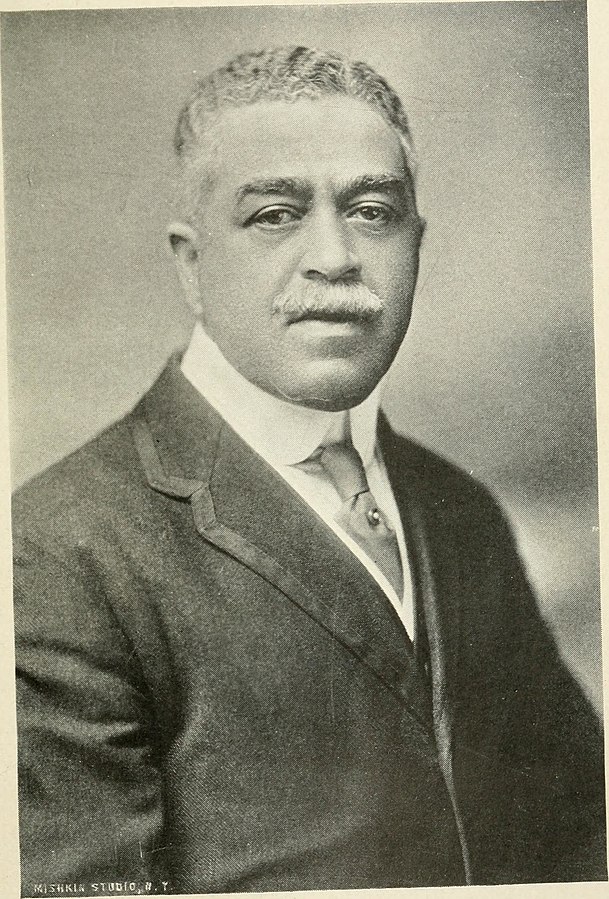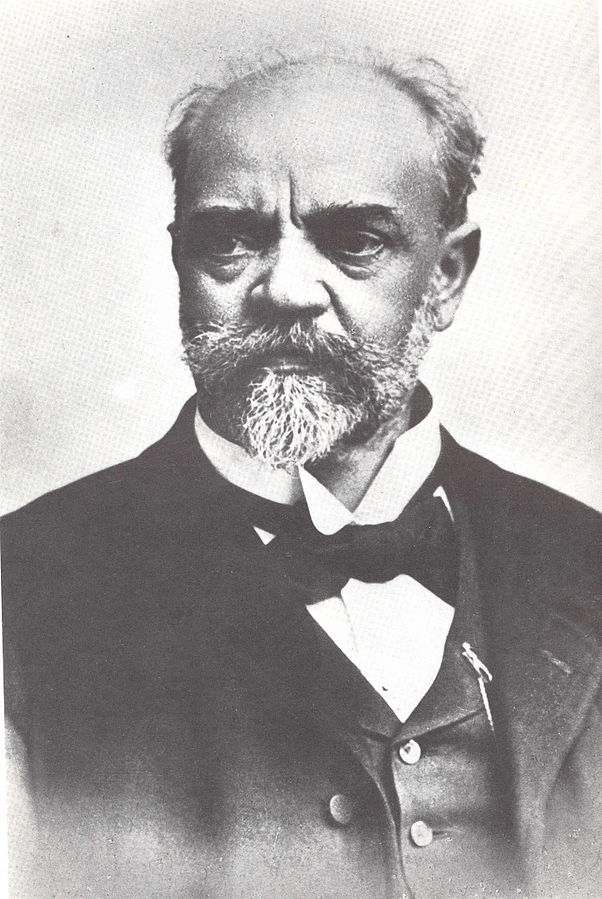Musical Friendships
In A Week on the Concord and Merrimack Rivers, Henry David Thoreau described friendship:
“They cherish each other’s hopes. They are kind to each other’s dreams.”
So much beautiful music has come to the world through the mutual encouragement of friends. In this post, we will explore some historic friendships in classical music, when great artists were kind to each other’s dreams.
Johann Christian Bach and Carl Friedrich Abel


Johann Christian Bach (1735-1782) was the youngest son of Johann Sebastian Bach and his second wife Anna Magdalena Wülken. J.C. Bach had a lot of older brothers and sisters, but as a young person he also found time to make friends with Carl Friedrich Abel (1723-1787). Carl’s father, Christian Ferdinand Abel, worked with J.S. Bach at the court of Anhalt-Cöthen. The fathers were such good friends that J.S. Bach was godfather to C.F. Abel’s daughter.
When J.C. Bach moved to London to write opera in 1762, he found his friend Carl Friedrich Abel already established there as a bass viol player. In 1764 the two became roommates, and soon they teamed up professionally as well: in 1765 they began a concert series that became known as the Bach-Abel Concerts. Public, ticketed concerts were still a new idea at the time: in the 18th century, most professional music happened at aristocratic courts, opera houses, or places of worship. Bach and Abel shared the duties of directing and performing their series of ten to fifteen concerts each year. The Bach-Abel Concerts were so successful that they continued until 1781.
Felix Mendelssohn and Hector Berlioz


If you were searching 1830s Europe for likely musical friends, you might not expect to find the reserved classicist Felix Mendelssohn (1809-1847) spending time with a flamboyant, experimental Romantic like Hector Berlioz (1803-1869). However, the two hit it off when they met in Rome in 1831. Soon afterward, Berlioz wrote to friends in Paris,
“I have met Mendelssohn. He is a fine fellow, and his execution is on a par with musical genius, which is saying a great deal. All that I have heard of his music has charmed me; I firmly believe that he is one of the greatest musical intellects of the day.”
Berlioz goes on to write of their odd-couple Italian tourism. Mendelssohn showed Berlioz ancient Roman ruins: Berlioz, the modernist, was unimpressed. Berlioz poked fun at religion, and pious Mendelssohn was shocked. Despite their differences, they clearly enjoyed their time together: Berlioz summed it up, “I owe him the only endurable moments I enjoyed during my stay in Rome.”
Berlioz and Mendelssohn saw each other again at a concert in Leipzig in 1843. Berlioz wrote that Mendelssohn was “charming, attentive, excellent–in a word, a good fellow all round. We exchanged batons in token of friendship.” Felix’s sister, composer Fanny Hensel, described this baton exchange in her diary, hilariously demonstrating that the two friends remained as opposite as ever:
“In return for Felix’s pretty light stick of whalebone covered with white leather [Berlioz] sent an enormous cudgel of lime-tree with the bark on.”
Clara Schumann and Josephine Lang


Josephine Lang (1815-1880) was a German pianist, singer, and composer. She had the admiration and friendship of many contemporary musicians. Felix Mendelssohn and Fanny Hensel both admired her work, and Mendelssohn gave her theory lessons. Robert Schumann also praised Lang’s work in his music journal, the Allgemeine musikalische Zeitung.
Lang taught and composed throughout her life, but her need for work became dire in 1856, when her husband passed away. She was left with only her music career to support her children, while suffering from chronic illness herself. One friend who lent a hand was another single parent, Clara Schumann (1819-1896). Schumann’s husband Robert had died in the same year, leaving her with a large family of children to support. While Clara Schumann was renewing her career as a piano soloist, she found time to arrange a benefit concert for Josephine Lang, in which she performed Lang’s compositions, and helped invigorate Lang’s career as a teacher and published composer.
Johannes Brahms and Johann Strauss II

Music connected Johannes Brahms (1833-1897) to quite a few artistic friends over the course of his life, including some composers of lighter music than his own. Here he is in 1894, photographed at the spa town of Bad Ischl in Austria with Johann Strauss II (1825-1899). Strauss had a villa in Bad Ischl, where he often invited Brahms to parties.
On one of these occasions, Strauss’s stepdaughter asked Brahms to autograph her fan, and on it he wrote the opening bars of Strauss’s Blue Danube Waltz, with the inscription, “unfortunately not by Johannes Brahms!”
Brahms has a reputation as a very serious composer, but clearly he wasn’t too dour to admire the infectiously charming music of the Waltz King.
Henry Thacker Burleigh and Friends



In 1892, Bohemian composer Antonín Dvořák (1841-1904) came to the United States to teach at the new National Conservatory of Music in New York. Arts patron Jeannette Thurber had founded the conservatory, and hired Dvořák, because she wanted to encourage the growth of an American musical style. She felt that Dvořák had done so well establishing Czech national music that he could also help American composers find their voice.
Dvořák quickly concluded that African American music was some of the finest material America had to offer. To learn about spirituals, Dvořák turned to Henry Thacker Burleigh (1866-1949), a student at the National Conservatory. Burleigh had learned a vast repertoire of spirituals from his maternal grandmother, who had formerly been enslaved. He recalled the melodies for Dvořák in his beautiful baritone voice, and Dvořák was inspired to create a theme reminiscent of spirituals in his Symphony No. 9, From the New World. Dvořák encouraged Burleigh to create his own compositions based on spirituals, and Burleigh went on to write a classic library of spiritual arrangements for voice and piano, as well as original songs and chamber works.
Burleigh continued to build musical bridges throughout his distinguished career. For more than fifty years, he was a soloist at St. George’s Episcopal Church in New York, where he overcame initial objections because of his color, becoming a beloved and influential musical leader. He also supported the work of English composer Samuel Coleridge-Taylor (1875-1912), accompanying him as a baritone soloist during Coleridge-Taylor’s 1910 tour of the United States.
Tōru Takemitsu and Igor Stravinsky


Composer Tōru Takemitsu (1930-1996) was an influential 20th-century modernist, whose music drew on both the Western avant-garde and traditional Japanese music and instruments. One of the works that brought Takemitsu international success was his Requiem for Strings, a piece he composed in 1957 in memory of Fumio Hayasaka, composer for Akira Kurosawa’s film Rashōmon.
Igor Stravinsky (1882-1971) heard Takemitsu’s Requiem for Strings during a 1959 visit to Tokyo, and he was deeply impressed. In a 1989 interview printed in Perspectives in New Music, Takemitsu recalled the occasion, as well as Stravinsky’s subsequent support of his career.
Takemitsu explained that Stravinsky heard the Requiem for Strings “by accident because, when he was in Tokyo…he asked to listen to new Japanese music. The radio stations arranged it. My music was not supposed to be played, but by chance someone played some and Stravinsky said, ‘Please, keep going.’ He listened to my music along with many other pieces. After that he had a press conference and he mentioned only my name. Then he invited me to lunch … After that he returned to the United States and perhaps he spoke about my music to Aaron Copland or something, so I got a commission from the Koussevitsky Foundation. Then I wrote a piece called Dorian Horizon, which was first performed by Aaron Copland conducting the San Francisco Symphony Orchestra.”
Margaret Bonds and Langston Hughes


American composer Margaret Bonds (1913-1972) discovered the poetry of Langston Hughes (1902-1967) in 1929, while she was a student at Northwestern University. She described the experience in a 1971 interview, quoted in Helen Walker-Hill’s excellent book on Black women composers, From Spirituals to Symphonies:
“I was in this prejudiced university, this terribly prejudiced place…. I was looking in the basement of the Evanston Public Library where they had the poetry. I came in contact with this wonderful poem, ‘The Negro Speaks of Rivers,’ and I’m sure it helped my feelings of security. Because in that poem he tells how great the black man is. And if I had any misgivings, which I would have to have – here you are in a setup where the restaurants won’t serve you and you’re going to college, you’re sacrificing, trying to get through school – and I know that poem helped save me.”
Bonds met Langston Hughes in Chicago in 1936, and they became close friends. She recalled, “We were like brother and sister, like blood relatives.”
Bonds and Hughes would forge a deep artistic connection. Hughes encouraged Bonds’s composing and performing, and sent her poems to set to music. More than half of Bonds’s compositions feature texts by Hughes, including musicals like Tropics after Dark and religious works like The Ballad of the Brown King. Bonds also set many of Hughes’s poems as art songs, including “The Negro Speaks of Rivers.” Bonds felt that this song was her best work: in 1967 she said, “I’ve done more complicated things but I don’t think I’ve ever surpassed it.”
For Further Reading
Bernard, Daniel et al. Life and Letters of Berlioz. United Kingdom: Remington and Company, 1882.
Bowers, Jane M., and Judith Tick, eds. Women Making Music: The Western Art Tradition, 1150-1950. Urbana: University of Illinois Press, 1987.
Kilgore, Alethea N. “The Life and Solo Vocal Works of Margaret Allison Bonds (1913-1972).” DMA diss. Florida State University, 2013.
Klingemann, Karl, ed. The Mendelssohn Family (1729-1847) from Letters and Journals. London: Sampson Low, Marston, Searle & Rivington, 1882.
Krebs, Harald, and Sharon Krebs. Josephine Lang: Her Life and Songs. United Kingdom: Oxford University Press, 2006.
Takemitsu, Tōru, Tania Cronin, and Hilary Tann. “Afterword.” Perspectives of New Music 27, no. 2 (1989): 206-214. Accessed August 28, 2020. https://www.jstor.org/stable/i234538.
Snyder, Jean E. Harry T. Burleigh: From the Spiritual to the Harlem Renaissance. Urbana: University of Illinois Press, 2016.
Walker-Hill, Helen. From Spirituals to Symphonies: African-American Women Composers and Their Music. Urbana: University of Illinois Press, 2007.
Check out our Spotify playlist accompanying this article: Musical Friendships.
Read other posts by Emma Riggle
Music Researcher & Archivist




